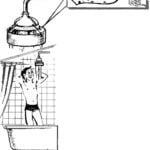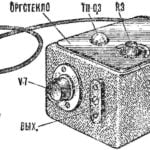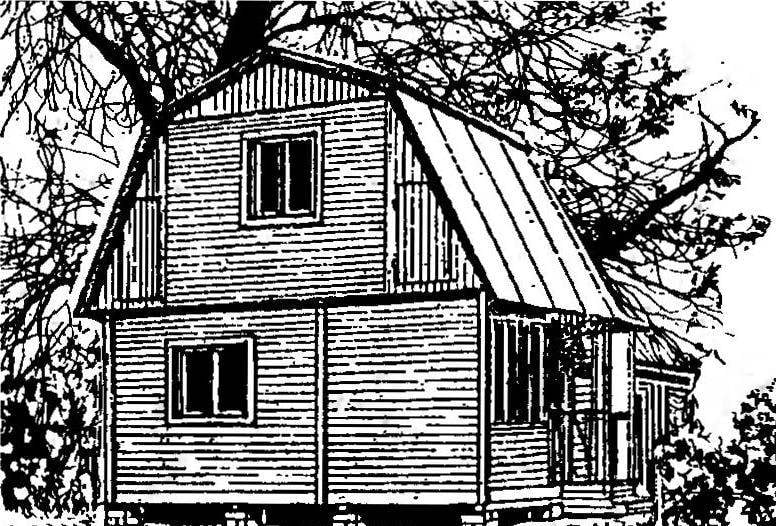the filtering device is selected depending on the characteristics of the soil affecting the efficiency of wastewater treatment, drainage volume and size of the infield. The most simple and cheap treatment plant — filter well. It works due to the natural ability of porous soils can transmit water and take her outside saturable site. The bandwidth of such a device depends on the absorbing properties of the soil located at a depth of 1…3 m, and the area in contact with the wastewater. Well the degree of biological treatment on quantity and quality lay in the well is excavated soil filter material, the surface of which is formed inhabited by microorganisms in the sludge. Using organic residues as a nutrient, microorganisms mineralize and purify fall in the well effluent.
The required filter surface area is easy to calculate, if you know what the absorption 1 m2 of sandy soils is 60…100 l/day. (sandy loam—30…50 l). For example, when waste water volume 600 l/day. the working surface of sandy soils located around the perimeter of the filter material should be 6…10 m2. For sandy soils, this value increases to 12 to 20 m2. The filter material can be granite or brick rubble, pebbles, slag, coke, peat, or even sand. In the well these materials are arranged so that the larger components were in the center and small at the periphery.
Structural diagram of the filtering well is chosen depending on its capacity and materials used. In any case, over the Central part of the filter material leaving an air cavity, equipped with a lid. The air in the cavity is carried out through the vent riser. The pit walls include holes for the passage of filtrate from the Central part to the periphery. The height of the filter material — 1 …2 m, the distance from the bottom of the well to the groundwater level must be at least 1 m.
If for any reasons it is impossible to build the filter wells at the site equipped with underground filtration field. The basis of their irrigation system is buried in earthen trenches perforated pipe, which is pre-treated in septic tank wastewater. Uptake of sewage is going on with the surface layer of soil to a depth of 1 m. the Estimated area of the soil through which it filters, should be 2 times more than that of the filter wells. Thus, when the flow 600 l/day. the General working area of the trenches in sandy soils is 12…20 m2, sandy loam — 25…of 40 m2. When the thickness of the filtering layer of 250 mm and the width of the bottom 500 mm work surface is 1 linear meter of the trench is 1 m2, respectively the total length of trenches is as follows: for sandy soils and 12…20 m, for sandy loam — 25…40 m
Underground filtration field have, as a rule, no closer than 15 m from the house. The waste water passed through the septic tank, sent to a distribution well, and from there through irrigation pipes directly to the field. For irrigation system used asbestos-cement or ceramic pipe with a diameter of about 100 mm, which is placed in the trench in the layer of filter material with a thickness of 200…300 mm with a gradient of 0.003 to 0.005 in…in the direction of flow. For the passage of sewage at the bottom of asbestos-cement pipes make cuts on half of their diameter width of 15 to 20 mm in increments of 150…200 mm, and in ceramic drilled holes. With the same purpose the pipe is laid with a gap width of 20…30 mm, which cover the top strip of roofing material. To exclude the ingress of rain and flood waters in the trench, after backfilling it is covered with a roofing material, and over it put a layer of soil. For air flow in the filter layer at the ends of distribution pipes installed vent risers with a diameter of about 100 mm and a height above ground of 0.5 m to 1 m.
On loamy and clayey soils with small (almost zero) water absorption using sand and gravel filters. Wastewater is passed through these treatment facilities, is withdrawn outside of the estate land is in a drainage ditch, a ditch or ravine. Sand-gravel filter is a trench or a pit filled with filter material, in the thickness of which is on the horizon, separated from each other by 1 m to 1.5 m in height, placed the irrigation and drainage network of asbestos or ceramic pipes with a diameter of about 100 mm. At the level of the pipes are laid two layers of coarse-pored filter material such as gravel, crushed stone or slag, and the space between them is filled with coarse sand. The distance between the parallel rows of irrigation pipes should be 0.5…1 m, the height of the sand filter — not less than 0.5 m, and the area of the pit to be in direct proportion to the volume of wastewater. The calculations should bear in mind that through 1 m2 of a horizontal surface sand filter is 60… 100 l waste water per day. If the daily sewage volume is 600 liters, you will need a pit area 6… 10 m2.
Due to the fact that the outlet pipe in a sand and gravel filter is located at a depth of 1.5 to 2 m, the withdrawal of treated wastewater outside of the infield by gravity is impossible. In this case we have to send the water that has passed through sand and gravel filter within the surface drain through the pumping station with electric pump, equipped with, typically, a small intermediate tank with float level sensor that allows the pump to run in automatic mode. Interestingly, in summer, the treated wastewater can be used for watering the garden.
I. KHOROSHEVSKAYA
Recommend to read
 SHOWER WITH SHADE
SHOWER WITH SHADE
In the baths of the old sample, where the shower head is located high on a tubular rod, the water sprayed too wide, gets on the floor. "Curb" this water fan will help a kind of... COMPACT POWER SUPPLY
COMPACT POWER SUPPLY
What is the kit-the fan does not dream to collect small-sized power source? But here everything depends on the power transformer: it-largely determines the dimensions of the power...

